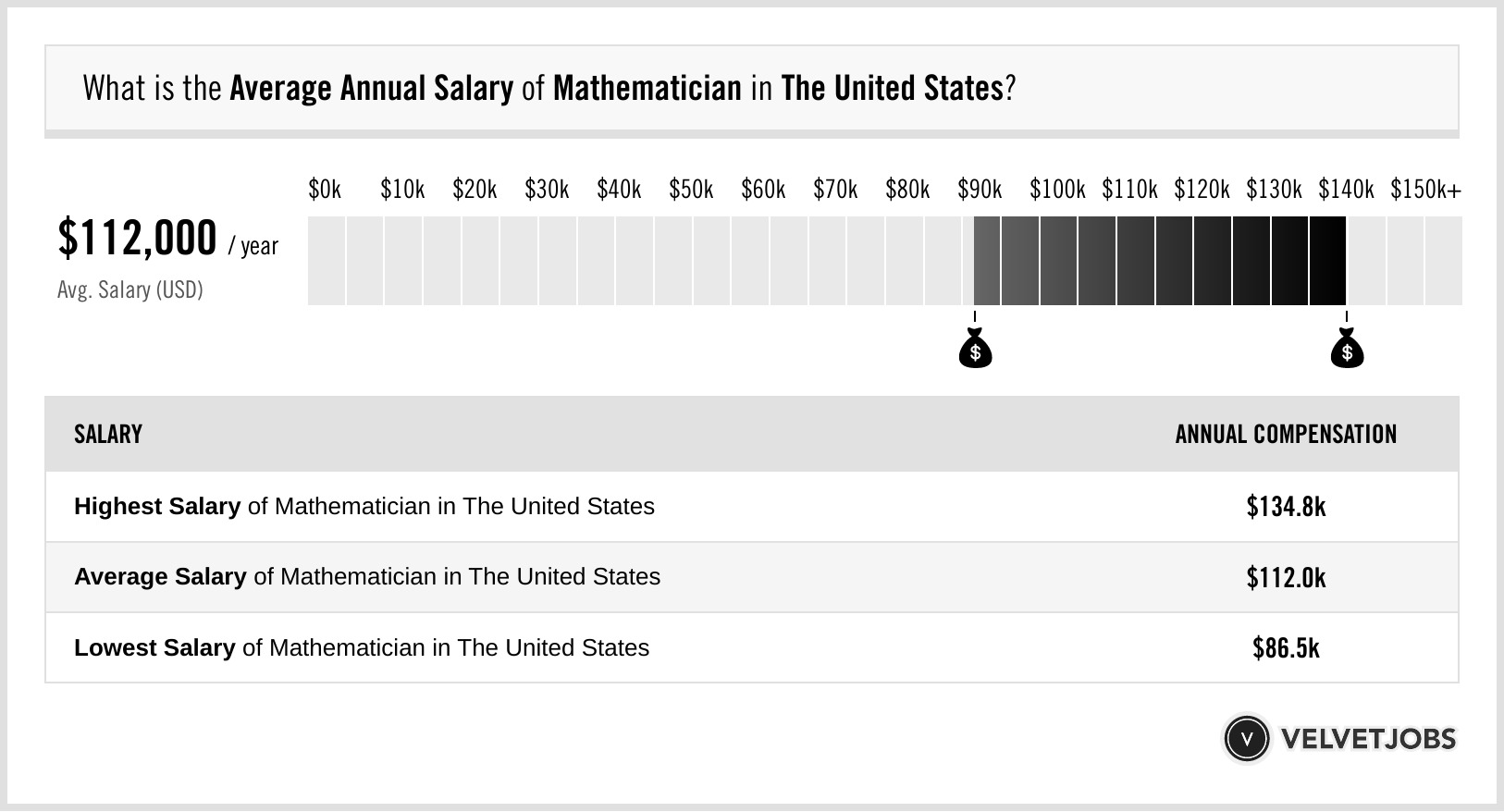The domain of mathematics is often compared to a vast ocean, with depths yet to be discovered and horizons that extend beyond the limits of imagination. Just as fishermen in this ocean cast their nets to harvest hidden treasures, professionals within this discipline diligently navigate the myriad pathways of quantitative inquiry. Among the myriad questions that arise in this field is one that preoccupies many aspiring mathematicians: What is the average salary of a mathematician?
To answer this, one must first traverse the labyrinthine structures that undergird the profession. The average salary of a mathematician is akin to the observatory’s lens, providing perspective on not only what mathematicians earn but also the factors that modulate their financial remuneration. The average, typically framed in numerical terms, encapsulates a wealth of intricate variables shaped by educational credentials, experience, geographic locale, and industry sector.
At the dawn of a mathematician’s career, educational accomplishments play a pivotal role in determining earning potential. Mathematicians often commence their professional journeys armed with a bachelor’s degree in mathematics or a related discipline. However, the allure of higher salaries beckons many to pursue advanced degrees such as a master’s or a Ph.D. A graduate degree in mathematics serves as a gateway to more prestigious positions, as well as the intellectual apparatus to tackle more complex problems. Those who complete doctoral programs not only refine their analytical prowess but also unlock doors to academia and specialized industries, thus amplifying their earnings potential significantly.
As one ascends the career ladder, the years of experience add layers to a mathematician’s expertise, much like an artist adding depth to a canvas. Entry-level mathematicians, often fresh from academia, may find themselves earning salaries that hover around the median mark. Yet, with each passing year, as professionals cultivate their skills and contribute increasingly intricate solutions to their organizations, their financial rewards typically escalate. This phenomenon illustrates the adage that knowledge and time are intertwined; with each passing year, the intricacies of mathematics reveal themselves further, and so do the corresponding financial compensations.
Geographic factors also exert a significant influence on salary levels, akin to the varying climates that affect the growth of flora. Urban centers, often hosting the headquarters of major corporations, government agencies, and research institutions, tend to offer higher salaries for mathematicians compared to their rural counterparts. Regions with a robust demand for analytical talent, such as Silicon Valley or metropolitan areas housing financial districts, can afford to pay more due to the competitive nature of the job market. Conversely, mathematicians working in less populated regions may find themselves at a financial crossroads, wherein the cost of living does not justify the potential earnings.
The industry in which a mathematician operates also stands as a determining factor in salary discourse. There exists a plethora of fields where mathematicians can lend their expertise, including finance, technology, academia, healthcare, and government. For instance, those embedded within the finance sector, working with statistical models and predictive analytics, often report some of the highest salaries within the profession. This economic paradigm showcases the mathematician as a critical player in risk assessment and investment strategy, wielding numbers as instruments of power.
Conversely, mathematicians employed in academia may experience a different trajectory. While they contribute significantly to the body of knowledge through research and teaching, their salaries may not match those in the corporate world. However, many find intrinsic rewards in shaping the minds of future mathematicians, fostering a community of inquiry that transcends monetary compensation. The intersection between passion and profession becomes palpable; sometimes, the echoes of intellectual satisfaction can outweigh the sirens of higher salaries.
The burgeoning field of data science also beckons to mathematicians, drawing them into an interdisciplinary vortex where mathematics, statistics, and computer science converge to tackle modern problems. In this arena, the typical salary can exceed the average for traditional mathematicians, as industries are willing to invest in data-driven insights that possess the power to transform organizations.
Furthermore, as we gaze into the crystal ball of the future, it is evident that the demand for skilled mathematicians will continue to expand. The encroachment of technology and increased reliance on data in decision-making processes foreshadows a burgeoning market. Economists project that careers in mathematics and related fields will experience robust growth, promising lucrative opportunities for those entering the profession.
Ultimately, the average salary of a mathematician embodies more than a mere numerical representation; it is a reflection of the dedication, exploration, and mutual interplay of various factors that contribute to a mathematician’s journey. As they traverse this complex landscape, mathematicians not only strive for financial sustainability but also seek to uncover the very essence of numerical elegance. Much like the delicate brushstrokes in an exquisite painting, their contributions add to the richness of human understanding, leaving an indelible mark on diverse disciplines and society at large.
In conclusion, while the average salary of a mathematician is an important consideration for those embarking on this career path, it must be viewed through a multifaceted lens. Factors such as education level, experience, location, industry, and personal passion all play pivotal roles in shaping the overall narrative of a mathematician’s professional life. As we navigate the future, the mathematical ocean teems with opportunities, beckoning those who wield numbers with artistry and precision.












